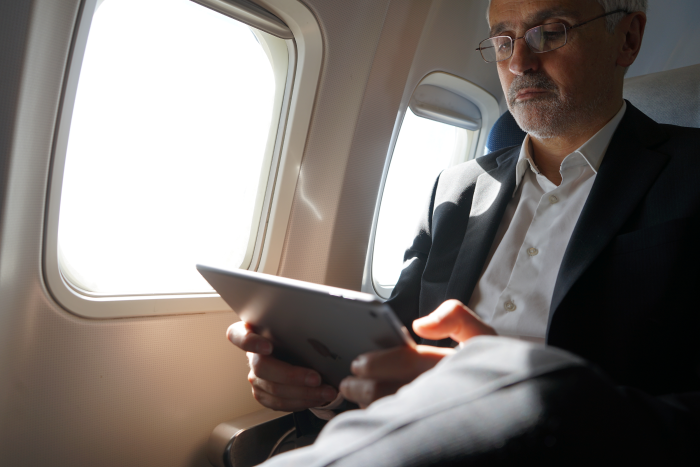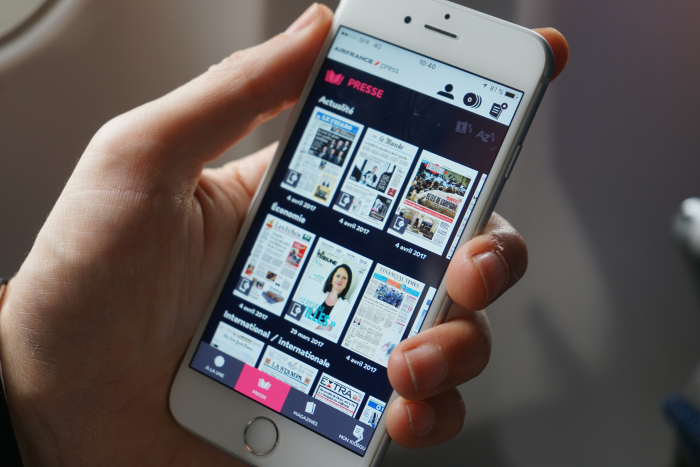Guest Column: Sanitizing the seatback
This is a special feature from PAX Tech's July Cabin Hygiene, Seating & IFEC 2020 edition.

The year 2020 has not been – and, most likely, will not be – the year that any of us expected. Of course, I’m referring to the COVID-19 pandemic that, for many months, effectively shut down all aspects of the travel industry, with the aviation industry being particularly hard hit.
Even now that some countries have started to flatten the curve and borders are opening up, it is still anticipated that the travel industry could take years to return to pre-COVID-19 and 2019 numbers.
It’s plain to see – no matter how much travel picks up in the coming months or years – that no airline will come out of this unaffected. However, some will be facing a much better financial outlook post-pandemic than others.
What are the factors that will decide which airlines are most successful, post-virus?
This can be answered in one word: innovation.
Now is the time for airlines to establish their post-Coronavirus operational strategy so they will be ready when the demand returns. Airlines must dig deep and truly think outside of the box when it comes to how they will fulfill passengers’ needs, while cutting costs and boosting revenue.
New Priorities
COVID-19 has introduced a new normal for every aspect of our daily lives and it has shifted travelers’ perspectives and priorities for their inflight experience as well. Health and safety will be front-of-mind for passengers and they will be looking to airlines to implement strategies to protect them from potential contagions that they may encounter while traveling. As such, inflight amenities and services will need to be considered and updated to address health-related concerns.
So how can airlines provide for their germ-conscious passengers?

First, it’s important to put yourself in your germ-conscious passengers’ shoes. You’ll quickly see that the aircraft and seats could be perceived, by passengers, as a possible cesspool of germs – and the airline must act today to ensure that they’re ready to greet these passengers – with their new needs and wants – as the industry very slowly picks up again.
Today’s passengers want some pretty big changes. Of course, more regular disinfection must be a priority, including the seat, seatbelt, tray table and seatback pocket, even during short turnarounds.
COVID-19 is also accelerating digital transformations that were already underway in the aviation industry. To significantly decrease passengers’ perceived exposure to contagions, airlines should digitize everything possible, including hard copy inflight magazines and instead share the same content via a digital magazine.
The switch from hard-copy newspapers to digital newspapers, readable on the same device as digital magazines, is another way to offer passengers the press content that they want, both inflight and in the lounge, from the safety of their own device (via the airline’s mobile app or a web portal in lounges).
Finally, airlines must consider digitizing duty-free catalogs, safety cards and menus - again, reducing opportunities for transmission of contagions between passengers and saving time on turnaround sanitization measures.
An April 2020 article by Future Travel Experience, entitled ‘How the COVID-19 pandemic could change the end-to-end passenger experience forever,’ states: “… passengers may be more wary of touching inflight entertainment (IFE) screens and may turn to their own devices en masse. There could be an opportunity here for airlines, or more specifically airline apps. Airlines may have more success in convincing passengers to use their apps if it adds value at every touchpoint – from checking in and navigating through the terminal, to controlling IFE and even interacting with cabin crew – creating a real opportunity for them to promote relevant ancillary services through their mobile apps to an almost captive audience.”
If you’re still not convinced about the value of digital press content in a post-pandemic world, here are some other key benefits to this innovative strategy:
Boost Ancillary Revenue
Digital press content gives airlines important insight into passengers’ interests, needs and wants. The content-rich nature of newspapers and magazines provides the opportunity to mine data that will improve their ability to deliver targeted compelling ads more effectively to the right passenger, at the right time – drastically improving an airline’s travel retail conversion rates by leveraging up-selling and cross-selling opportunities.
Cut Costs
Eliminating hard copy press is also a great way to cut airlines’ operational costs; by eliminating the extra weight that hard copy newspapers and magazines add to each flight, airlines will experience a significant cost reduction on fuel. “According to research from Boeing, removing the weight of print newspapers and magazines equates to an annual savings of over $4.5 million for a fleet of wide-body aircraft operating 1,000 flights per day,” as reported by the Airline Passenger Experience Association (APEX) in 2016.
As well, offering digital press eliminates the logistical costs associated with providing hard copy newspapers and magazines, giving airlines another way to decrease their operating costs.
Help improve the environment, one flight at a time
Today’s passengers are also very environmentally conscious, giving airlines who prioritize improving their overall environmental impact a significant financial advantage when appealing to travelers. By eliminating paper waste from hard copy newspapers and magazines (and the weight associated with them), airlines use less fuel per flight, decreasing the overall carbon dioxide emissions and improving their carbon footprint – and, as a result, making their airline much more attractive to potential guests.
It’s A Brand New (Digital) World
As you can see, the change from hard copy inflight magazines and newspapers to digital press will improve your passenger experience and Net Promoter Score, create new ancillary revenue opportunities, offer valuable ways to cut logistical and operational costs, give your airline a financial advantage over airlines that aren’t prioritizing improving their environmental impact and, most importantly, it will reassure health conscious travelers of their safety inflight.
Airlines worldwide have already started implementing the switch to digital press inflight because they recognize their passengers’ general discomfort in touching items they don’t know are completely clean and sanitized. We expect to see many more forward-thinking airlines adopting digital press, through their IFE solution, in the coming weeks and months – after all, it will be an operational imperative for airlines worldwide during the very slow, COVID-19-impacted travel market - and beyond!

